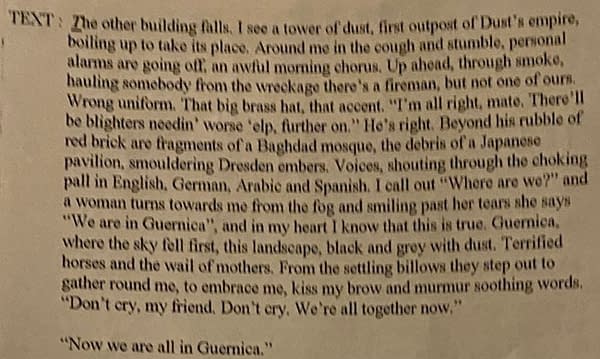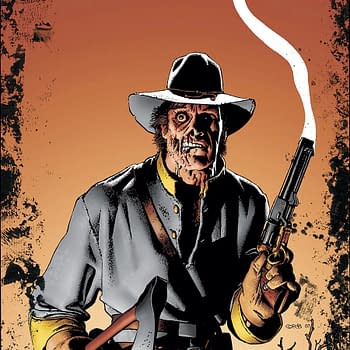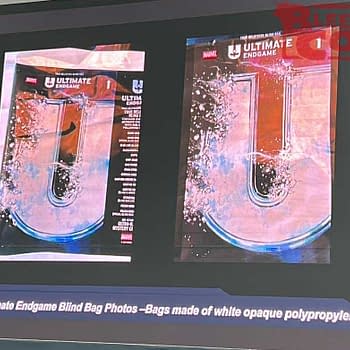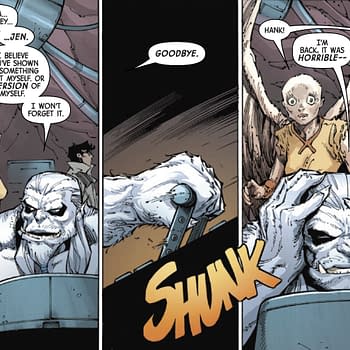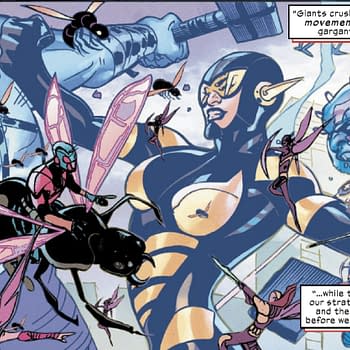Posted in: Comics | Tagged: 9/11, Alan Moore, Dave Gibbons, guernica, marvel, tom brevoort
Tom Brevoort Posts Alan Moore's Script For Guernica 9/11 Page
Alan Moore comic book script pages are often objects of fascination. This weekend saw the twentieth anniversary on the 9/11 attacks in the USA, and plenty of comic book creators posted their memories of the day, as well as the comic book stories, pages and illustrations it inspired and that they contributed to many publications at the time. Tom Brevoort, Marvel Executive Editor and Senior Vice President of Publishing, posted the original artwork of one page by Alan Moore and Dave Gibbons from one of Marvel's publications at the time, Heroes, in which the events of the destruction of the World Trade Center, were seen in the context of other events of such destruction on cities from the air, including Nagasaki, London, Dresden, Baghdad and more, all the way back to Guernica, the Basque town in Northern Spain bombed by Germany and Italy at the request of Spanish Nationalists. As well as the original artwork, Tom Brevoort also posted the original script pages from Moore.
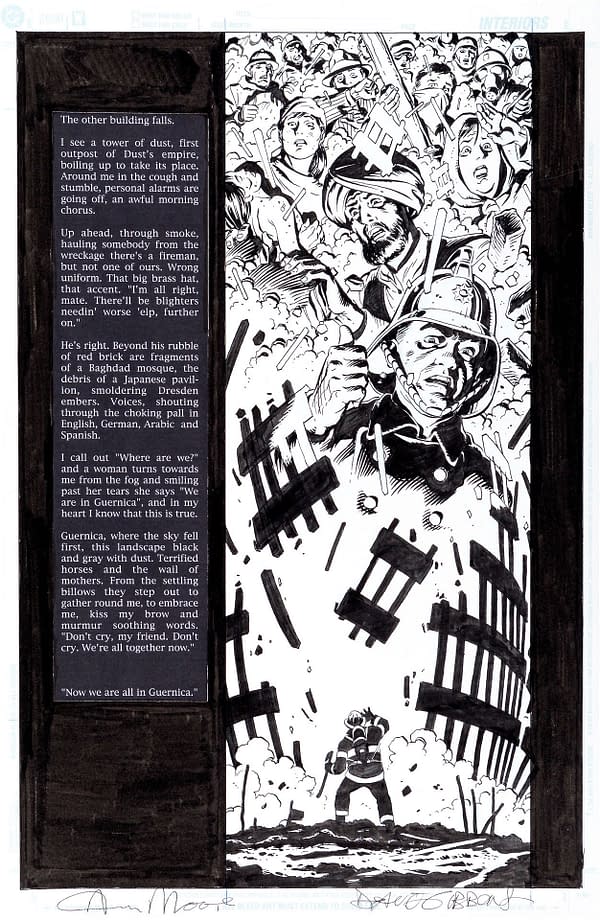
Notably, it reveals that the page wasn't written by Alan for Dave Gibbons, his former collaborator on Watchmen, but for any artist who might be assigned. I asked this of Brevoort, to be told "Yes, Dave was my call. Because why wouldn't it be?"
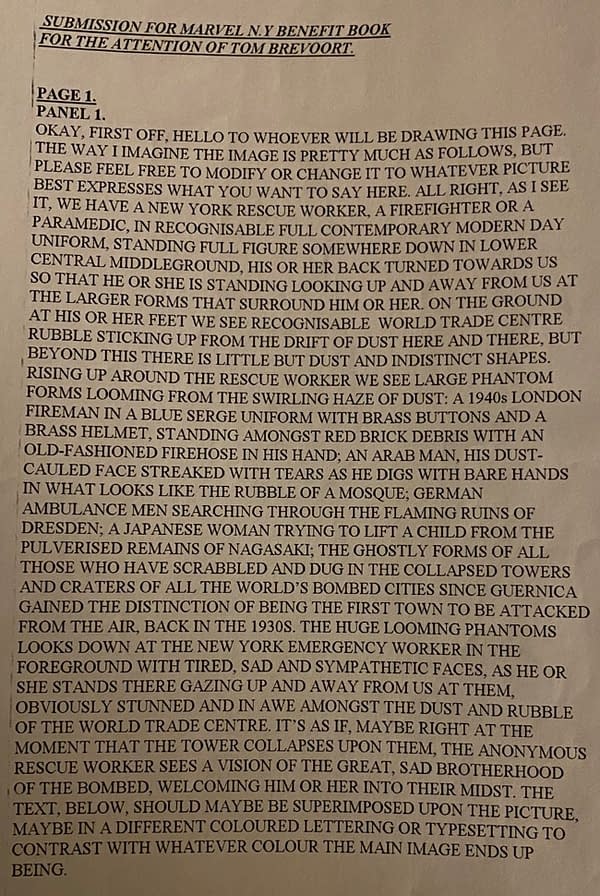
Submission for Marvel NY Benefit book
For the attention of Tom Brevoort.
Page 1. Panel 1. Okay, first off, hello to whoever will be drawing this page. The way I imagine the image is pretty much as follows, but please feel free to modify or change it to whatever picture best expresses what you want to say here. All right, as I see it, we have a New York rescue worker, a firefighter or a paramedic, in recognisable full contemporary modern day uniform, standing full figure somewhere down in lower central middleground, his or her back turned towards us so that he or she is standing looking up and away from us at the larger forms that surround him or her. On the ground at his or her feet we see recognisable world trade centre rubble sticking up from the drift of dust here and there, but beyond this there is little but dust and indistinct shapes. Rising up around the rescue worker we see large phantom forms looming from the swirling haze of dust: a 1940s London fireman in a blue serge uniform with brass buttons and a brass helmet, standing amongst red brick debris with an old-fashioned firehose in his hand; an Arab man, his dust-cauled face streaked with tears as he digs with bare hands in what looks like the rubble of a mosque; German ambulance men searching through the flaming ruins of Dresden; a Japanese woman trying to lift a child from the pulverised remains of Nagasaki; the ghostly forms of all those who have scrabbled and dug in the collapsed towers and craters of all the world's bombed cities since Guernica gained the distinction of being the first town to be attacked from the air, back in the 1930s. The huge looming phantoms look down at the New York emergency worker in the foreground with tired, sad and sympathetic faces, as he or she stands there gazing up and away from us at them, obviously stunned and in awe amongst the dust and rubble of the World Trade Centre. It's as if, maybe right at the moment that the tower collapses upon them, the anonymous rescue worker sees a vision of the great, sad brotherhood , of the bombed, welcoming him or her into their midst. The text, below, should maybe be superimposed upon the picture, maybe in a different coloured lettering or typesetting to contrast with whatever colour the main image ends up being.
